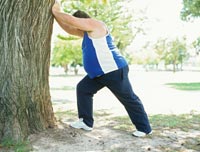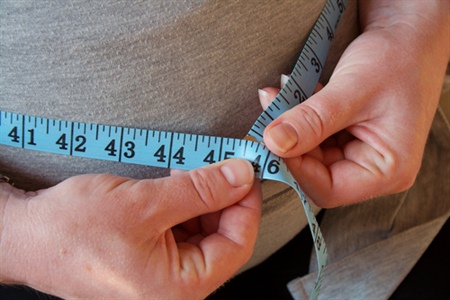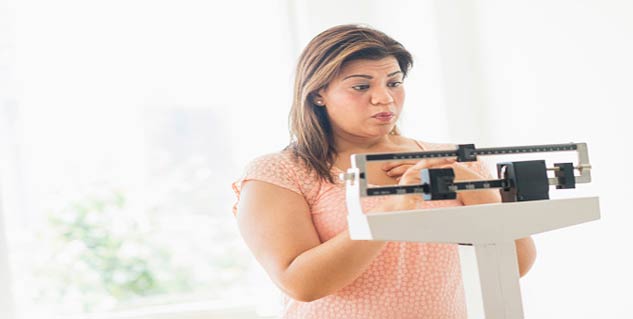Weight Loss Calculator: How Many Calories Do You Need?
If you are planning to lose weight then you should know how many calories you each day. Calorie restrictive diets work well, but only if you correctly follow them! The problem with implementing a calorie restrictive diet is twofold:
- People often overestimate the amount of food that they need
- People underestimate the how hard it is to restrict calories
Here we share daily calorie tables and then provide advice on how to use this information to lose weight.
Remember that these are just average figures so you may need more or less than the calories stated here. If you wish to have a more accurate figure then read our page Basal Metabolic Rate (BMR) Explained. Both of these are good weight loss calculators.
Also, you only need the higher figure on the days that you are most active. Doing two intensive workouts each week does not mean you need maximum calories on the other 5 days. If you want to learn more about healthy weight loss start here: How To Lose Belly Fat.
Daily Calorie Needs for Females
Important: these are averages and provide a guideline only.
Age/yearsSedentaryLow activityHigh activity2-31100125014004-51200135015006-71300150017008-914001600185010-1115001800205012-1317002000225014-1617502100235017-1817502100240019-3019002100235031-5018002000225051-7016501850210071+155017502000Daily Calorie Needs for Males
Age/yearsSedentaryLow activityHigh activity2-31100135015004-51250145016506-71400160018008-915001750200010-1117002000230012-1319002250260014-1623002700310017-1824502900330019-3025002700300031-5023502600290051-7021502350265071+200022002500How Many Calories Do You Need to Reduce By?
Studies have shown that women who eat 1000 fewer calories than they need lost around 2 pounds per week. This is a healthy and sustainable level of weight loss. The same rule applies to men.
How many calories should you be eating?
The two tables above show the average calories requirements for males and females at various ages for varying levels of activity. Sedentary means no exercise or rarely active. Low activity means walking, housework, some play. High activity means regular exercise, generally more active in work and life.
This is a general guide to the amount of calories you need to be in deficit to lose a specific amount of weight:
- If you are in a deficit of 500 calories per day you will lose approximately 1 pound per week
- A calorie deficit of 750 calories will help you lose about 1.5 pounds per week
- A calorie deficit of 1000 calories will help you lose about 2 pounds per week (about 1 kg weight loss per week)
- To lose 20 pounds in a year you will need to eat 200 calories less per day than you were eating when your weight was stable
- To lose 20 pounds in 1 month, you need to eat 2400 calories fewer per day. Overweight people who usually eat 4000 calories per day can lose weight quicker than lighter people – they can reduce their intake by 2400 calories per day and still eat enough to sustain themselves.
Do Not Eat More When Exercising
What often strikes people who are new to dieting and exercise is that the high activity group do not need many more calories than the low activity group. Being very active adds 300 calories for men and 250 calories for women.
This is the equivalent of a sandwich or a large white coffee in terms of food energy. This is why it is important that you do not eat more food just because you are exercising! The exercise creates a calorie deficit but if you eat more to compensate you will fail to lose weight.
Learn more about activity calorie burn (calories burned for different exercises) in our article on What is the Best Exercise to Help Lose Weight?
Calorie Requirements for Teenagers
We have highlighted the calories needs of teenagers as this is an important time during a persons development, and also a time when many people start to become more aware of their bodies.
Few teenagers are aware that their calorie needs are higher than that of any other age group, and for sporty teens, such as those that play sports or are practicing martial arts or are learning to dance, they need around 500-600 more calories a day than their sedentary peers.
During this time the quality of energy consumed must be high for healthy growth. What is worrying is the trend for many teens to skip meals to keep their weight down. They could be setting themselves up for long term health problems as well as stunted growth. We have a page dedicated to teenagers here: Diet and Weight Loss Advice for Teenagers.
Calorie Needs As We Get Older
For a woman in her 30’s that is not exercising, 2000 calories a day is enough to maintain weight. To lose 2 pounds per week, she needs to reduce her daily calories by 1000, which means consuming 1000 calories a day. If she is exercising 3-4 times a week then she can eat 1250 calories per day.
This may seem low, but it is how our bodies work. To lose weight you need to restrict calories, this is what is meant by a calorie deficit. Eating healthier foods help too. Lean proteins will be used to build new muscle tissue. Fresh fruits and vegetables contain fiber to aid digestion. Bread is full of energy (around 100 calories per slice) and has little of nutritional value.
Losing weight is not just about counting calories – it is about eating a balanced diet and exercising too. Diet without exercise almost always leads to eventual weight loss failure. See our article MotleyHealth’s Guide To Losing Weight to learn why.
Calories in Carbohydrates, Protein and Fat
Typical Calorie and Nutrition Label
If you are counting calories to aid weight loss, then you need to know how many calories are in carbohydrates, proteins and fats.
- Protein has 4 Calories per gram
- Carbohydrates has 4 Calories per gram
- Fat has 9 Calories per gram
- Alcohol has 7 Calories per gram
You may think that the best way to create an energy deficit is to eat more carbohydrates, but not all carbohydrates are equal. To lose weight while eating carbs you need to eat low GI carbohydrates (effectively they contain less sugar) which tend to have higher fiber content, which means that you do not absorb so much of the energy.
All food that you consume is either used immediately as energy by the body or stored as fat for the future. You gain weight when you eat more than you burn, you maintain your weight when you eat as much as you burn, and you lose weight when you eat less than you burn. Understanding this is the key to losing belly fat and losing weight.
If you look at the calories in fat, it quickly becomes obvious why there has been such an emphasis on eating low fat foods in recent decades. Fat has more than twice as many calories per gram than carbohydrate or protein. A healthy and well balanced diet will have adequate macro-nutrients and still allow weight loss to occur.
Swapping fatty food for carbohydrate or proteins means that you can eat the same weight in food and take in fewer calories. The health food industry has taken advantage of this and produced many foods that are low in fat but far higher in sugars. Read Sugar, Carbohydrates and Your Health to learn more about this.
Structure Your Life
To lose weight you need to start to structure your life. You need to plan what you are going to eat each day so that you do not end up snacking on junk food when your fridge gets empty. You need to plan each exercise session in advance so that you never put off exercising because you cannot think what to do.
Find 5 workouts that you enjoy doing, such as bodyweight exercises, circuit training workouts, weight training workouts or just sessions on the elliptical trainer. This ensures that you can get variety in your new lifestyle and this helps you to stay interested.
If you plan your weight loss and calorie restriction, there is no reason why you cannot lose 100 pounds in 2 years. It will not be an easy task, but it will be rewarding, and the best thing you ever do.
Creating An Energy Deficit
If there is one rule that applies to every single overweight person it is this:
- To lose weight you must create an energy deficit
It is that simple! Although as we all know, implementing a theory is never as easy as writing it down.
The amount of energy you consume is related to what you eat and drink. So the first step in losing weight is to determine how much you are eating and make a guesstimate at how much you need.
Permanent Lifestyle Changes
ust eating less will work, but it is not as effective as eating less and exercising. When you eat less food than you need you create an energy deficit. You will lose weight, but your metabolism will slow down, i.e. you burn calories slower.
This means that you will burn less energy throughout the day, which reduces your requirements even more, so you stop losing weight. You have to eat even less, and the cycle continues until a point where you are not receiving enough nutrients and vitamins to maintain a healthy body.
By exercising while dieting you keep your metabolism high and you build new muscle tissue which requires energy. By increasing your metabolism it is easier to adjust your diet to make changes to your daily energy deficit.
It is recommended that you make permanent lifestyle changes that will help you lose weight at a steady rate. Generally it is advisable to aim to lose 1-2 pounds per week (0.5 – 1kg per week).
Do not forget that there are a lot of calories in alcohol, especially beer. Just a few beers a week can put you over your daily energy requirements and stop you from losing weight. For example, drinking one glass of wine per day is enough to add 14 pounds of weight over a year. One bottle of wine has as many calories as a large meal. So if you are serious about losing weight you need to ensure that you are losing weight every day of the week. This is why diets such as the Dukan Diet are so successful – they encourage you to give up alcohol completely.
Calories Are Hard To Count
The order in which food is presented to you can determine how many calories you think it contains. If you are shown a low calorie fruit salad and then a burger you are likely to think that the meal contains more calories than if you see a burger followed by a high calorie cheesecake.
Research published in the Journal of Consumer Research explains that simply changing the order in which 2 meals were shown to a person would significantly alter their perception of how many calories were in that meal.
This discovery could explain why so many people eat too much food and put on weight, especially those that love desserts.
For example, when people were shown a cheeseburger they estimated that it contained 570 calories, whereas when shown a salad first and then a cheeseburger, they thought that the cheeseburger contained 787 calories. Just by looking at another meal they thought that the cheeseburger contained more energy than it actually did.
“The sequence in which items are considered often influences our evaluations of these items” – Alexander Chernev, Northwestern University.
Just by changing the order in which the meals were viewed changed the perceived calories from 757 to 1,097 calories.
Self Regulation of Consumption
This principal can help you to self-regulate their food consumption which should reduce overeating. For example, eating more than one course will result eating too much, so stick to a single course.
Diet is the main cause of obesity and weight problems, but many people do not realise that this is the case. Many people think they are not overeating even though they are overweight. For your next meal, avoid starters and desserts.
This could also explain why people that love desserts are more likely to be overweight. They simply underestimate the amount of food that they are eating.
Learn how to measure how many calories you have used or consumed.
1500 Calories a Day With Exercise
Here is an example for anybody hoping to lose 100 pounds. If you aim to lose one pound a week until you reach your goal, you should eat around 1500 calories a day, and exercise.
Your diet should be healthy and balanced. Avoid sugar and saturated fats, and instead eat low GI vegetables, fresh fruits, lean meat, fish and drink water, tea and coffee.
For exercise you should aim to walk for at least 15 minutes every single day. Also do a 30 minute workout 3 times a week. As you get fitter you can do a shorter but more intensive workout 5-6 times a week. This helps you to maintain a higher metabolism and so burn more fat.
It is important to see your doctor before you start a weight loss plan that will see you losing so much weight. If you have not done any exercise for many years then it is wise to get some professional medical advice. Generally a walking program is suitable for most people that are obese.
References
“Semantic Anchoring in Sequential Evaluations of Vices and Virtues.” by Alexander Chernev. Journal of Consumer Research: February 2011. A preprint of this article:http://journals.uchicago.edu/jcr.
-
Weight Loss & Healthy Aging
Do you weigh more than you did ten years ago, or even fi
-
Burn belly fat – Steps to a better body
The 1st thing you need to do as you appear to lose excess weight is ge
-
Are Weight Loss Supplements Right For You
The debate about whether supplements for weight loss are healthy or no
-
Let Your Spouse Sleep And Stop Snoring With These Tips
Do you have a snoring problem you want to take care of? People do
-
2 Ways Counting Calories Can Make You Fat
I know many people count calories to los
-
25 Genius Ways Fitness Trainers Stay Motivated to Exercise
V
- DON'T MISS
- Quick Weight Loss Tips - Diets That Work
- Majority of weight loss occurs via breathing
- Half My Size at Last
- Hypnosis For Permanent Weight Loss For The 65 Of Americans Who Are Overweight
- Can’t Stop Eating at Night? What Do You Do?
- Healthy Diet Plan: 3 Highly Effective Weight Loss Plans Under $50
- Weight Loss For Good If Only You Had Known
- Losing abdominal fat - three things you need to know before you start
- The Inner Game of Healthy Weight Loss: Self-Image Makes the Difference
- Is A Weight Loss Doctor Right For You?




